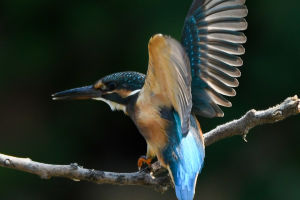Researchers have finally discovered the key to the iconic purring sound of our furry little feline friends—it involves soft pads in a cat's throat.
Scientists have long been puzzled by how cats produce their distinctive low-pitched purring sounds, as low-frequency sounds are typically emitted by larger animals with longer throats.
These "purring pads," embedded in the vocal folds, seem to increase in density, causing them to vibrate more slowly and produce the pleasingly low rumble that humans enjoy.
An international team led by sound scientist Herbst from the University of Vienna in Austria challenges the widely held belief that active muscle contraction causes purring.
Instead, scientists suggest that purring might be a passive aerodynamic behavior that continues automatically after an initial signal from the brain.
The researchers wrote in their published paper, "These low-frequency vocal fold oscillations involve a special phonatory mode with abnormally long closed phases, akin to the 'voiced' part of the human 'voiceless fricative' zone."
When we speak with a voiceless fricative, we produce a low, husky sound by vibrating our vocal folds at very low frequencies, sometimes described as a "humming" or "gravelly" sound. The degree of vocal fold opening and tension level, along with the airflow through the vocal folds, all affect the sound.
The functioning of purring pads is similar, allowing kittens, despite their much shorter throats than ours, to produce purring sounds using the same mechanisms that typically generate high-frequency sounds (like meows).
Collagen proteins and elastic fibers in the vocal fold connective tissue weaken the high-frequency parts of the sound, much like a roaring cat.
These structures, up to 4 millimeters in diameter, have been previously found in domestic cats, but their role in purring has not been explored.
To investigate, Herbst and colleagues extracted throats, including the vocal folds, from eight deceased domestic cats. They then pressed the vocal folds together and blew warm, moist air through them.
Surprisingly, all eight throats produced purring sounds without any muscle contractions or nerve input, generated by self-sustained vocal fold oscillations within the purring frequency range of cats (25 to 30 Hertz).
This astonishing finding suggests that muscle contraction is not necessary for purring. The connective tissue structure may be the primary driving factor, though this would be more challenging to prove through measurements in live cats.
The team wrote, "While our data do not completely refute the hypothesis of active muscle contraction for purring, they indicate that cat throats can easily produce purring sounds without nerve input or muscle contraction, at frequencies of 25 to 30 Hertz."
Why cats purr remains a mystery. Some theories suggest purring indicates contentment and encourages further interaction with humans. Research also indicates that purring may be a healing mechanism.
This study may provide new insights into the role of purring in a cat's health and happiness. It could help scientists develop new technologies that mimic purring, such as sedatives for cats or even new therapies for pain and anxiety.
The study has been published in the journal "Current Biology".


